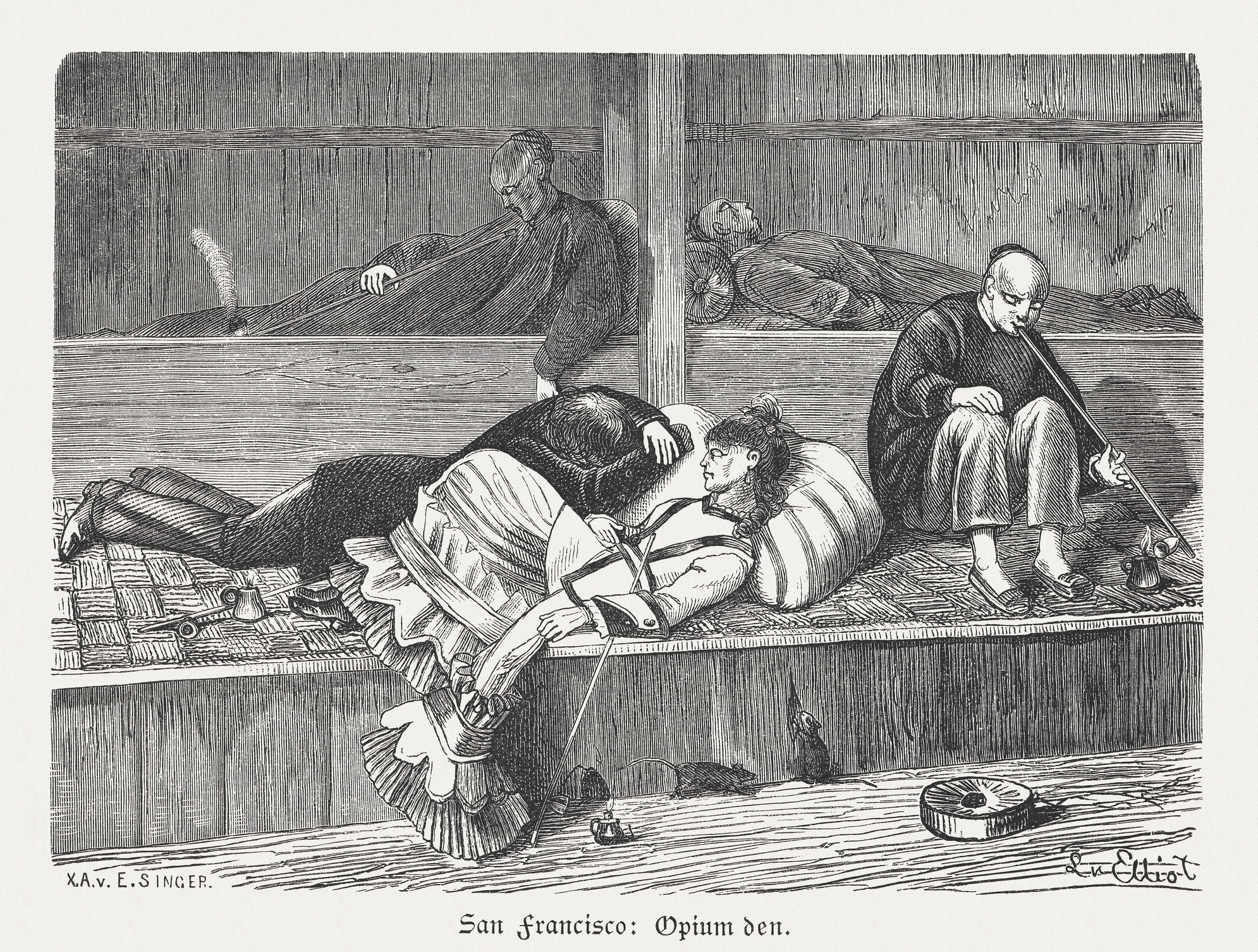Is there anything quite as miraculous for pain alleviation as opium, its derivatives and its synthetic imitators? The answer, put quite simply, is no, as Lucy Inglis demonstrates in her engaging and impressively-researched historical account Milk of Paradise: A History of Opium. For example, the use of opium as an analgesic for those wounded in battle began when humans started cultivating the Papaver somniferum, or the opium poppy, during Neolithic times. (The oldest signs of its use go back 7,500 years, to a Neolithic settlement of miners in Spain.) In modern times, when injured on the battlefield, American and British troops are given fentanyl lollipops, so that if they were to black out, these would fall out of their mouths, and death by overdose would be avoided.
Tracing the poppy’s tangled paths through time is a gargantuan task, not least because the history of opium, as Inglis recognizes, is inextricably intertwined with that of the human race itself. This is evident in how firmly embedded opium is in the growth of colonialism, trade and, most crucially, medicine. Its use both as an intoxicant and a pain reliever has endured through civilizations, and its relationship with medicine has been recorded extensively: modern surgical procedures would never have evolved so rapidly without opium’s palliative powers. But Inglis also takes care to explore how insidiously addiction can lodge itself in a user, as well as the disastrous consequences of the politicization of the ‘miracle drug’ and the historical efforts to exploit or control addiction. She traces the line from prohibition right up till the present crisis of painkiller addiction in the United States of America.
Unfortunately, in trying to pack such a massively detailed history into a single book, Inglis loses her bearings. She also seems to have been unable to tell which parts of her extensive research were required for the book and which were not — there are historical details, such as those about 17th-century China and the establishment of Hong Kong as a major port, that are interesting but have, at best, a tangential connection to opium. Could not these parts have been better edited?
Moreover, although Inglis highlights the US’s present ‘opioid crisis’, she fails to shed light on the way forward. Her tone also veers uncomfortably towards the moralistic at times — for example, she lauds Robert Southey’s censure of Samuel Coleridge’s ‘abuse’ of laudanum. Having said that, Inglis’s heart seems to be in the right place. Milk of Paradise ends with a first-hand account of the author’s chance encounter with addicts — the kind of meetings that give way to important reflections. While observing three heroin addicts at a bar in southern France, Inglis says: “Addictions of all kinds surround us, making us neither good nor bad, nor less human. They make us who we are. Our petty daily tallies, the small triumphs in the face of finality, are measured out in teaspoons for the billionaire and the street addict alike.”
Milk of Paradise: A History of Opium By Lucy Inglis, Macmillan, £14.99











